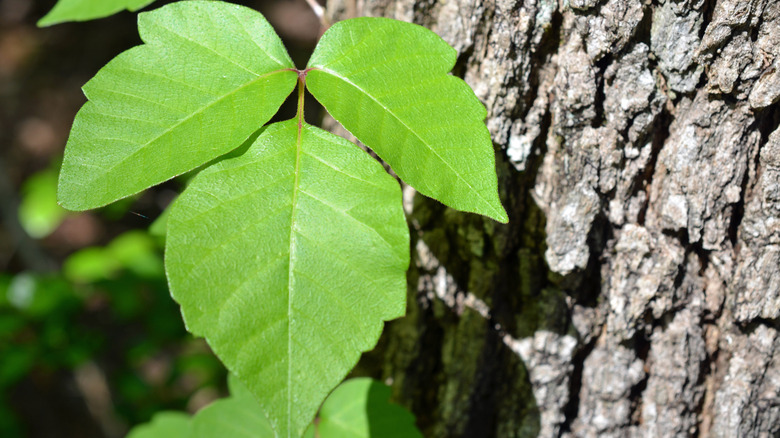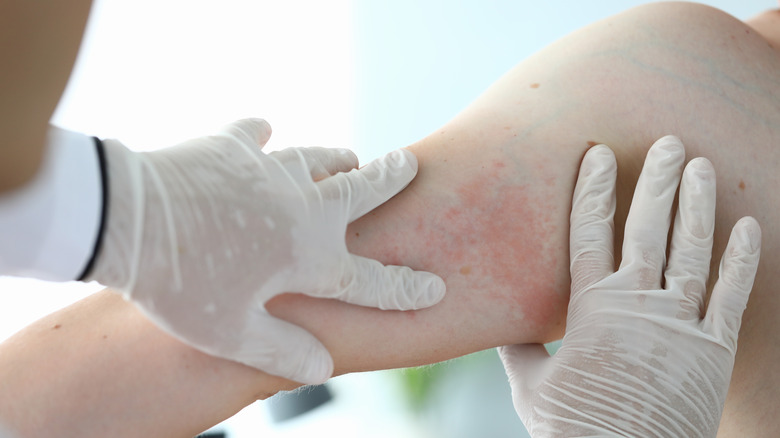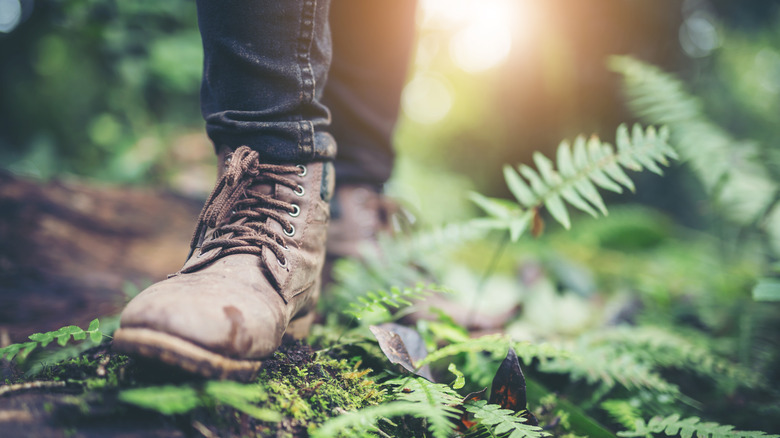When Should You Contact A Medical Professional For A Reaction To Poison Ivy, Oak, Or Sumac?
Unfortunately, there's no escaping poison ivy, oak, or sumac. As it turns out, these plants can be found in all continental states across the country, according to experts at Mount Sinai. Thriving in hot areas with ample sunlight, these plants are commonly found alongside bodies of water, particularly lakes and cool streams.
What unites these three plants is that each of them contains urushiol, according to Mount Sinai. Contact with this oily chemical can prompt symptoms of burning, itching, redness, swelling, and blistering.
However, it's not just contact with the plant itself that can stimulate this reaction. Exposure to items contaminated with the substance such as tools, clothes, or even pets, can also trigger symptoms.
In fact, according to Johns Hopkins Medicine, urushiol can stay active for quite some time. Since it can remain active for more than a year, it's important to thoroughly rid the oil from any contaminated items, as well as your skin.
When an allergic reaction warrants medical care
Emerging within three days following exposure, the contact dermatitis symptoms of an allergic reaction to poison ivy, oak, or sumac will eventually subside as the fluid-filled blisters begin to rupture and crust off, reports Johns Hopkins Medicine. In the event that the rash is small, mild, and certain to be related to either poison ivy, oak, or sumac, the American Academy of Dermatology Association (AAD) states that the reaction can be treated with at-home remedies.
You should rinse the area thoroughly with warm, soapy water as soon as possible. Experts at Johns Hopkins Medicine suggest repeating this process three times. Wearing protective gloves, the AAD also advises washing your clothes and using warm and soapy water to wash any and all items that may have come in contact with the oil, including animals. Be sure to refrain from scratching in order to protect against infection. Calamine lotion, colloidal oatmeal baths, applying a cool compress, or taking an oral antihistamine may help reduce itchiness.
However, in the event that you experience unbearable itching, a fever over 100 degrees Fahrenheit, multiple rashes, blisters that ooze pus, outbreaks on your face or genitals, or the rash has spread to the majority of your body, be sure to contact your doctor (per Johns Hopkins Medicine). Swelling, particularly around the eyes, or trouble swallowing or breathing warrant immediate emergency medical attention. As does inhaling or swallowing these poisonous plant components, as doing so can be life-threatening (via Mount Sinai).
Reduce your chances of exposure
In some cases, a more serious rash from poison ivy, oak, or sumac may require prescription medication, per the Mayo Clinic. While most cases resolve themselves within three weeks, pay a visit to your doctor if the rash does not improve within seven days (via FamilyDoctor.org).
In preparation for your doctor's visit, consider some questions to ask your physician, such as: Can the allergy progressively worsen in the long run? Why do some people have a more severe reaction to these plants than other individuals? Is the rash contagious? And, what is the best way to rid your yard of poison ivy, oak, or sumac?
In addition to having your questions at the ready, experts at Johns Hopkins Medicine encourage patients to make note of any important information their doctor provides for them, such as the name of any medications prescribed, possible side effects, other treatments, and follow-up appointment dates. Although a poison ivy, oak, or sumac allergy has no cure, talk with your doctor about how best to reduce your symptoms, and be sure to practice prevention.
Those who hunt, hike, camp, garden, or frequently engage in other outdoor activities are at an increased risk of crossing paths with these plants (via Mayo Clinic). To help protect yourself from exposure, experts suggest wearing long-sleeve shirts and pants while outside, promptly washing your hands and clothes after potential exposure, and learning to identify these plants on sight.



